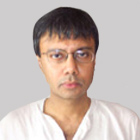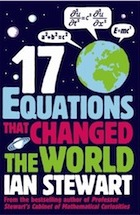SRINIVISAN Ramanujan (1887-1920) and Muhammad Abdus Salam (1926-1996), two intellectual giants of the 20th century, were born in the same corner of the world. Of humble origin and educated in local schools, they nevertheless rose to dizzying heights in the arcane world of theoretical science. Few others on the subcontinent enjoy their iconic status.
What I shall address below is that both attributed their works to some divine agency. Some of their devotees see this in validating their own respective belief system. With the rise of Hindutva in India, and the violent persecution of Ahmadis in Pakistan, these claims assume considerable importance. Hence a careful, impartial examination is called for.
No mathematician has a story more romantic than Ramanujan’s. Many books, plays, and movies — such as The Man Who Knew Infinity (2015) — dwell upon this enigmatic figure. Drawing upon deep intuition, Ramanujan created new concepts in the theory of numbers, elliptic functions and infinite series. Even full-blown mathematicians take years to grasp his complex ideas.
Exceptional genes plus fortunate circumstances is why some become maths-science superstars.
Born in Madras to a low-level clerk, this young Brahmin boy was steeped in tradition, sang religious songs, attended temple pujas, and was a strict vegetarian. But by age 12, he was inventing sophisticated theorems and unwittingly duplicating some results of European mathematicians of the previous century. He flunked college twice for lack of interest in anything but mathematics — in which he excelled. His awestruck teachers could not decide whether he was a genius or fraud.
At 16, encouraged by one of his teachers, Ramanujan sent off a letter to the renowned pure mathematician G.W. Hardy at Cambridge University. It was accompanied by theorems densely packed into nine pages. Hardy was stunned and arranged for him to travel to England. Ramanujan duly obtained permission from the family goddess Namagiri, consulting appropriate astrological data before his voyage overseas.
At age 32, Ramanujan was dead. He had returned to Madras exhausted, half-famished and fed up with English winters. But even on his deathbed, his pen scrawled out profound results. A century later these still intrigue the brainiest of mathematicians and string theorists. He attributed his exceptional qualities to the psychic visitations of Namagiri who would whisper equations to him. Sometimes, he said, “she wrote on my tongue”. He told colleagues, “An equation for me has no meaning unless it represents a thought of God.”
This was how Ramanujan saw it. But how does one explain that Euler, Bernoulli, Gauss, Cantor, Hilbert and Gödel were non-Brahmin mathematicians who stood still taller? The edifice of modern mathematics owes largely to them, not to Ramanujan. Some were ardent Christians, others agnostic or atheistic. Nobody knows how to explain their feats.
Curiously, Abdus Salam, then a 19-year-old student at Government College Lahore, wrote his very first paper proposing a simpler solution to an intriguing mathematical problem posed about 20 years earlier by Ramanujan. He ended his paper by triumphantly declaring: “His [Ramanujan’s] solution is much more laborious”.
This was Salam’s debut into the world of high mathematics. Born into a conservative religious environment in Jhang — then a village-town — this child prodigy rapidly outpaced his teachers. Fortunately they bore him no grudge and helped him move on to Lahore. The next stop was Cambridge, where he excelled. By the early 1960s, he was one of the world’s top particle physicists, ultimately winning 20 international prizes and honours including the Nobel Prize in 1979.
In his later years, Salam gave numerous public lectures and interviews, recorded on camera and in print, locating his source of inspiration in his religious belief. In particular he said the concept of unity of God powered his quest for the unification of nature’s fundamental forces as well as his search for ever fewer numbers of elementary particles.
For me, to engage on a sensitive matter with one so senior and superior was not easy. But sometime in 1986 I picked up the courage to ask Salam the obvious question: both he, who thought himself a believer, and Steven Weinberg, an avowed atheist, had worked independently on unifying two of nature’s four fundamental forces and yet had arrived at precisely the same conclusions. How?
Salam gave his answer in the preface he wrote for my book on Islam and science (1990), where he stated: “I can confirm that he [Hoodbhoy] is right…”, and then went on to explicitly clarify that any bias towards the unification paradigm in his thinking was only unconsciously motivated by his religious background.
There is not the slightest doubt that Salam used exactly the same tools as Weinberg did — principally quantum mechanics and relativity theory — and did physics exactly as other physicists do (but better than most). His political and religious views were irrelevant to his work. Let’s note that although they are giants of physics, Salam and Weinberg stood on the shoulders of still greater giants — Einstein, Pauli, Dirac, Wheeler, and Feynman — whose personal philosophies of life vastly differed from each other.
Salam sourced his inspiration to his religious beliefs, while Ramanujan claimed direct transmission from his gods. These claims cannot ever be proved or disproved. It is also irrelevant here that Salam thought of himself as a Muslim whereas, by Pakistani law, he is not.
How can prodigious talent blossom in the absence of rigorous scientific training? Two factors explain Ramanujan’s and Salam’s successes. First, nature sometimes gifts an individual with exceptional innate mathematical ability. This is associated with brain circuits in the parietal lobe and acquired through genetic transmission. Second, by good fortune, Ramanujan and Salam managed to escape into a scholarly environment — Cambridge University — where their genius could flower. Had either stayed back home he would be unheard of today.
It is usual to take pride in the geniuses belonging to one’s own tribe. The ancient civilisations of China, India, Greece, Arabia, and modern European civilisation all claim superiority over others because of the creations of their most brilliant minds. But in fact an individual’s exceptional genes and fortunate circumstances — not some supreme transcendence — are the real reasons. While sources of inspiration do differ, empirically and logically deduced results don’t. Science and its heroes belong to all humankind, not to any one tribe.


